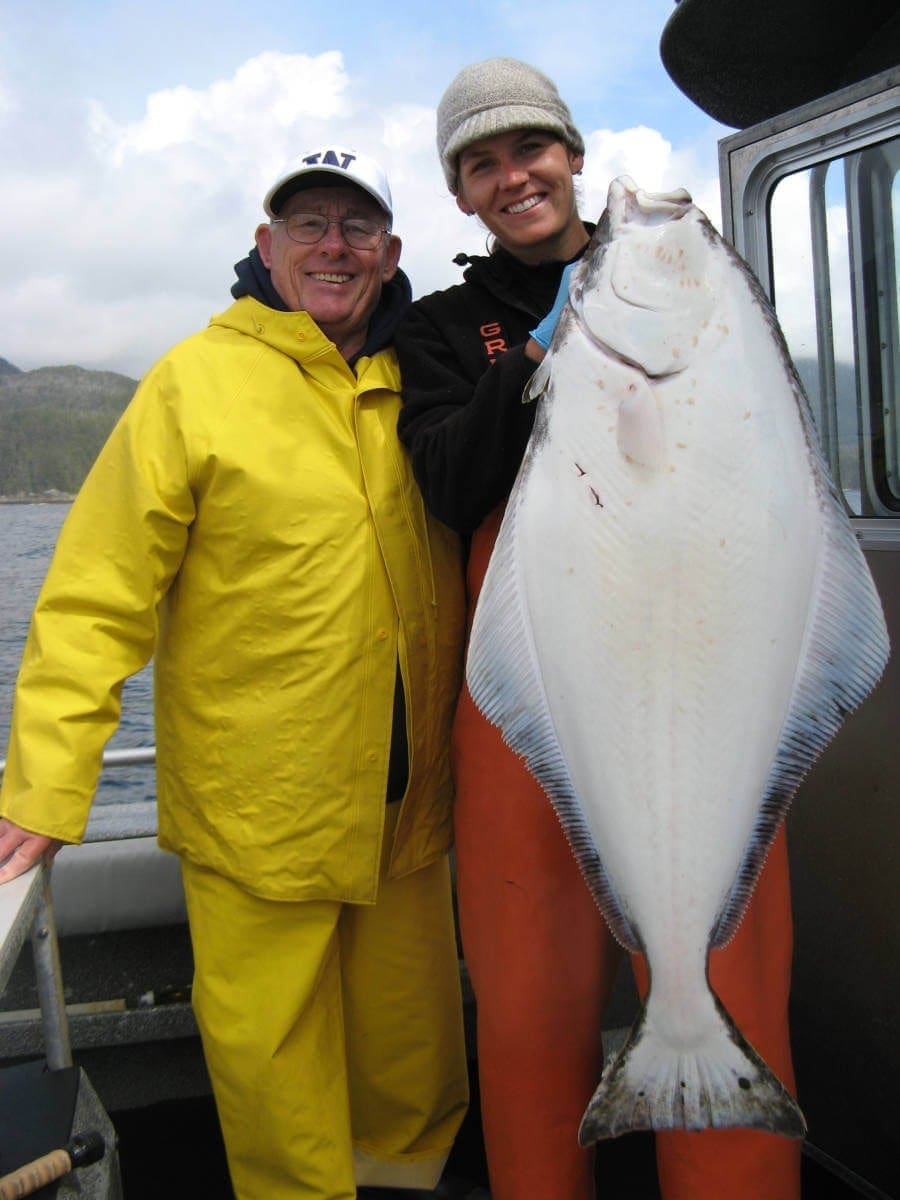We usually fish for halibut every day after salmon fishing or as a break between periods of salmon fishing. The switch requires a change in mindset and reaction. With salmon you’re looking for a subtle bite, waiting to confirm it, then reeling as fast as you can. With halibut, you’re looking for an obvious pulling down on the rod tip into which you reel powerfully Into stubborn resistance. With salmon you may have to reel 50 or more feet of line superfast to catch up to a rising fish, then be prepared to respond to the fishing running straight up, sideways, or away. Halibut pull directly down almost without exception.
Circle hooks work best for halibut in my opinion because once you hook the fish, they seldom come off and with the current size restrictions, you can release halibut that are too small or too big with minimal hooking mortality. It’s rare to gut hook a halibut on a circle hook.
Steps for hooking a halibut:
- Put the rod in the rod holder (you can hold it if you like, but it’s much, much harder work).
- Send the baited hooks to the bottom.
- Once you hit bottom, reel up until you feel the weight of your sinker, then crank another 3 or 4 turns. Don’t worry about being to exact – the tolerances aren’t that tight.
- Watch the rod for bites. Don’t bother reacting to small pecks and nibbles. You’re looking for something that pulls the rod tip down hard and heavy.
- Reel into resistance. That means crank when the tip is down.
- Reel at a steady, moderate pace. The goal is to pull the fish up while it’s pulling down. This will set the hook. If you reel fast as you would with salmon, you’ll find that more halibut come off.
- Keep the line tight as you bring up your halibut. In most cases, the fish will do that by pulling down, but if the boat is rocking on the waves, you’ll have to crank fast as the boat drops and stop as the boat goes up on the wave. If you time it right, the rocking of the ocean does most of the work.
Consider the switch from salmon to halibut like going from a Porsche to a Mack Truck. Salmon requires a lot of speed, sensitivity, and shifting gears. Halibut are all about staying in low gear and getting the work done. Slow and steady wins the halibut race.

